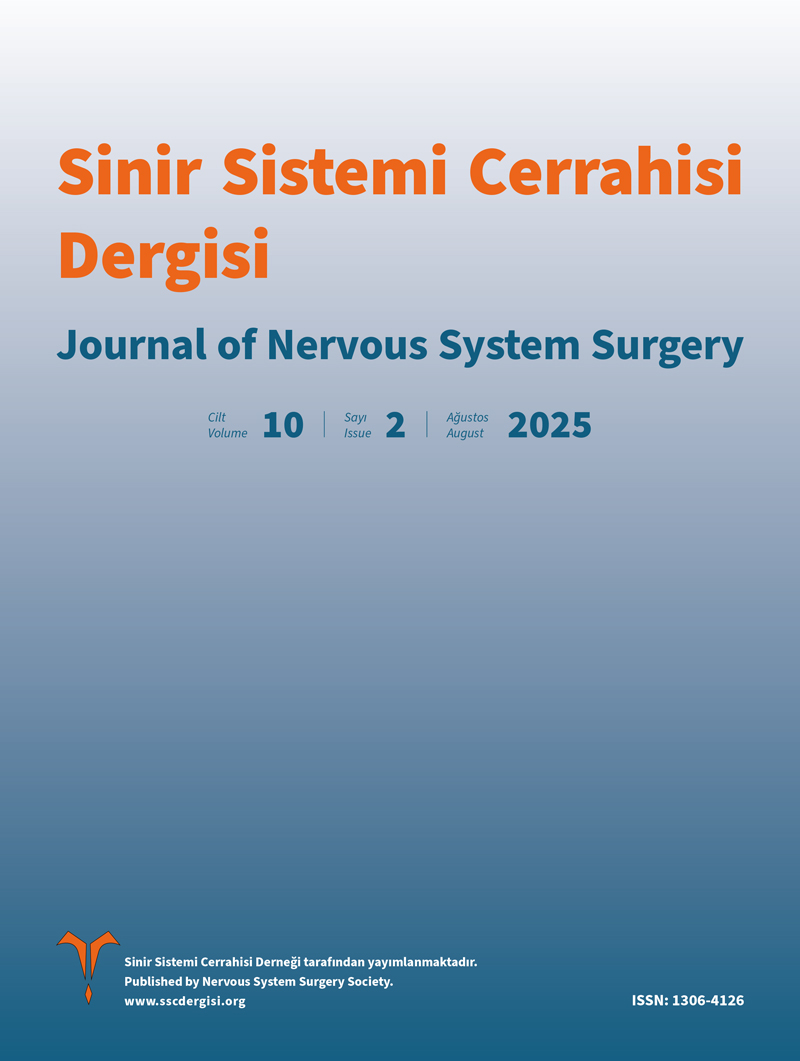Abstract
Introduction: This study aims to evaluate the production process, applicability, and educational potential of three-dimensional (3D) printed skull base models developed for use in endoscopic endonasal surgery (EES) training.
Methods: DICOM-format images obtained from cadaveric computed tomography (CT) data were processed using the 3D Slicer software to create a 3D digital model of the nasal passage. The models were converted into stereolithography (STL) format and produced at a 1:1 scale using polylactic acid (PLA) filament with a 3D printer. The printed skull models were tested with the endoscopic robotic arm previously developed in our earlier study. The robot’s capability to autonomously navigate to the sphenoid ostium along a predetermined path was evaluated.
Results: Following the setup, the robotic system was able to autonomously reach predetermined anatomical targets during the nasal and sphenoid stages. The PLA models demonstrated sufficient flexibility and durability to allow blunt dissection in the nasal passage. The use of these models enabled repeated trials prior to cadaveric applications, facilitating system optimization and resolution of potential technical issues, thereby preventing possible damage to cadaveric tissues.
Conclusions: 3D-printed skull base models can serve as a low-cost, accessible, and reproducible simulation tool for EES training. This approach has the potential to shorten the learning curve, accelerate surgical skill acquisition, and reduce complication risks. Future studies should focus on enhancing the anatomical and haptic realism of the models and on long-term evaluation of their effectiveness in surgical training with artificial intelligence integration.
Keywords: endoscopic endonasal surgery, three-dimensional printing, skull base surgery, robotic surgery, surgical training, simulation
References
- Ergen A, Çabuk B, Yıldırım P, et al. Design and use of assistant robotic arm in endoscopic transnasal surgery. Neurosurg Focus 2024; 57: E6. https://doi.org/10.3171/2024.9.FOCUS24426
- Koc K, Anik I, Ozdamar D, Cabuk B, Keskin G, Ceylan S. The learning curve in endoscopic pituitary surgery and our experience. Neurosurg Rev 2006; 29: 298-305. https://doi.org/10.1007/s10143-006-0033-9
- Morales-Gómez JA, Garcia-Estrada E, Leos-Bortoni JE, et al. Cranioplasty with a low-cost customized polymethylmethacrylate implant using a desktop 3D printer. J Neurosurg 2018; 130: 1721-1727. https://doi.org/10.3171/2017.12.JNS172574
- James J, Irace AL, Gudis DA, Overdevest JB. Simulation training in endoscopic skull base surgery: A scoping review. World J Otorhinolaryngol Head Neck Surg 2022; 8: 73-81. https://doi.org/10.1002/wjo2.11
- Candy NG, Zhang AS, Bouras G, et al. Pilot Validation of a 3-Dimensional Printed Pituitary Adenoma, Vascular Injury, and Cerebrospinal Fluid Leak Surgical Simulator. Oper Neurosurg 2024; 27: 632-640. https://doi.org/10.1227/ons.0000000000001177
- Newall N, Khan DZ, Hanrahan JG, et al. High fidelity simulation of the endoscopic transsphenoidal approach: Validation of the UpSurgeOn TNS Box. Front Surg 2022; 9: 1049685. https://doi.org/10.3389/fsurg.2022.1049685
- Zheng JP, Li CZ, Chen GQ, Song GD, Zhang YZ. Three-Dimensional Printed Skull Base Simulation for Transnasal Endoscopic Surgical Training. World Neurosurg 2018; 111: e773-e782. https://doi.org/10.1016/j.wneu.2017.12.169
- Park CK. 3D-Printed Disease Models for Neurosurgical Planning, Simulation, and Training. J Korean Neurosurg Soc 2022; 65: 489-498. https://doi.org/10.3340/jkns.2021.0235
- Osman A, Boyutlu Ü, Yardımı Y, et al. 3d-Printer Assisted Transsphenoidal Hypophysectomy. Vol 1. 2019.
- Wen G, Cong Z, Liu K, et al. A practical 3D printed simulator for endoscopic endonasal transsphenoidal surgery to improve basic operational skills. Childs Nerv Syst 2016; 32: 1109-1116. https://doi.org/10.1007/s00381-016-3051-0
- Piazza A, Petrella G, Corvino S, et al. 3-Dimensionally Printed Affordable Nose Model: A Reliable Start in Endoscopic Training for Young Neurosurgeons. World Neurosurg 2023; 180: 17-21. https://doi.org/10.1016/j.wneu.2023.08.072
- Vakharia VN, Vakharia NN, Hill CS. Review of 3-Dimensional Printing on Cranial Neurosurgery Simulation Training. World Neurosurg 2016; 88: 188-198. https://doi.org/10.1016/j.wneu.2015.12.031
- Efe IE, Çinkaya E, Kuhrt LD, Bruesseler MMT, Mührer-Osmanagic A. Neurosurgical Education Using Cadaver-Free Brain Models and Augmented Reality: First Experiences from a Hands-On Simulation Course for Medical Students. Medicina (Kaunas) 2023; 59: 1791. https://doi.org/10.3390/medicina59101791
- Santona G, Madoglio A, Mattavelli D, et al. Training models and simulators for endoscopic transsphenoidal surgery: a systematic review. Neurosurg Rev 2023; 46: 248. https://doi.org/10.1007/s10143-023-02149-3
- Shen Z, Xie Y, Shang X, et al. The manufacturing procedure of 3D printed models for endoscopic endonasal transsphenoidal pituitary surgery. Technol Health Care 2020; 28: 131-150. https://doi.org/10.3233/THC-209014
- Huang X, Liu Z, Wang X, et al. A small 3D-printing model of macroadenomas for endoscopic endonasal surgery. Pituitary 2019; 22: 46-53. https://doi.org/10.1007/s11102-018-0927-x
- Kocaeli Üniversitesi Tıp Fakültesi Beyin ve Sinir Cerrahisi Anatomik Kadavra Çalışması Endoskopik Transnazal Cerrahide Otonom Robotik Kol Tasarımı ve Kullanımı.
- Petrone S, Cofano F, Nicolosi F, et al. Virtual-Augmented Reality and Life-Like Neurosurgical Simulator for Training: First Evaluation of a Hands-On Experience for Residents. Front Surg 2022; 9: 862948. https://doi.org/10.3389/fsurg.2022.862948
- Takoutsing BD, Wunde UN, Zolo Y, et al. Assessing the impact of neurosurgery and neuroanatomy simulation using 3D non-cadaveric models amongst selected African medical students. Front Med Technol 2023; 5: 1190096. https://doi.org/10.3389/fmedt.2023.1190096
Copyright and license
Copyright © 2025 The Author(s). This is an open access article distributed under the Creative Commons Attribution License (CC BY), which permits unrestricted use, distribution, and reproduction in any medium or format, provided the original work is properly cited.






